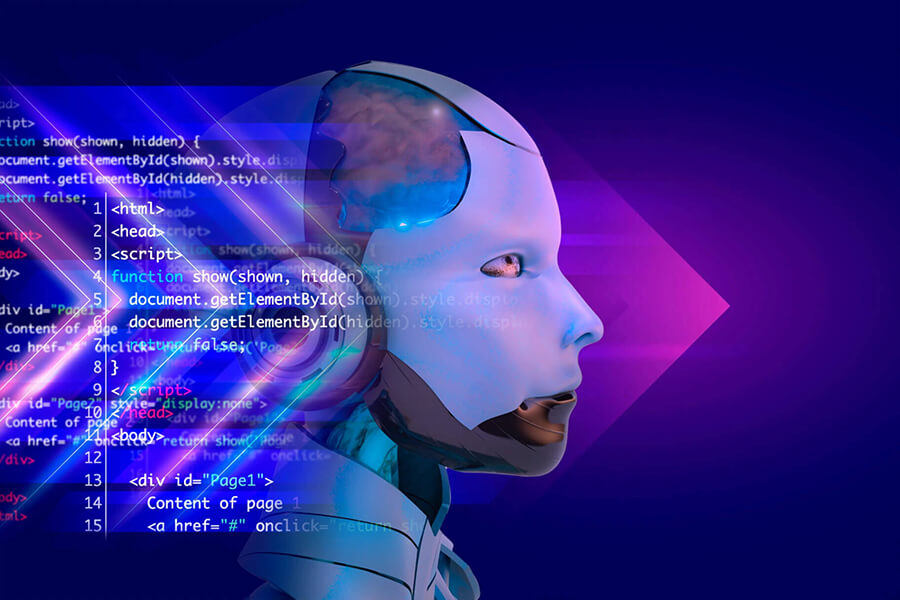Top 8 Programming Languages For Artificial Intelligence: Essential Tools for Modern AI Development
Artificial intelligence development requires specific programming languages that can handle complex algorithms, machine learning models, and data processing tasks. Python, R, Java, C++, JavaScript, Julia, Lisp, and Scala represent the eight most essential programming languages that AI developers should master. These languages offer unique strengths for different aspects of AI development, from rapid prototyping to high-performance computing.
The choice of programming language significantly impacts the success of AI projects, as each language brings distinct advantages for specific applications. Some excel at statistical analysis and data science, while others provide the computational speed necessary for deep learning frameworks. Modern AI development often requires knowledge of multiple languages to leverage the best tools for each project phase.
Understanding the capabilities and ideal use cases of each language helps developers select the right technology stack for their AI initiatives. The following analysis examines how these top 8 programming languages for AI development address different requirements, from research and experimentation to production deployment and scalability.
Overview of the Top 8 Programming Languages For Artificial Intelligence
Selecting the correct programming language for artificial intelligence projects depends on specific performance requirements, available libraries, and the type of AI application being developed. Programming languages for artificial intelligence vary significantly in their strengths for machine learning, deep learning, and neural network implementations.
Key Criteria for Selecting AI Programming Languages
Performance and Speed remain critical factors when evaluating AI programming languages. Real-time AI systems require languages that can process large datasets efficiently and execute complex algorithms without latency issues.
High-performance AI applications often demand compiled languages for computationally intensive tasks. Languages with strong memory management capabilities handle the massive data requirements of machine learning models more effectively.
Community Support and Documentation significantly impact development speed and problem-solving capabilities. Active developer communities provide extensive libraries, tutorials, and solutions for common AI development challenges.
The availability of pre-built functions and modules reduces development time considerably. Strong community backing ensures continued language evolution and compatibility with emerging AI technologies.
Library Ecosystem determines how quickly developers can implement complex AI functionality. Languages with comprehensive machine learning and deep learning frameworks accelerate project development timelines.
Fundamental Concepts Powering AI
Machine Learning Algorithms form the foundation of most AI applications. These algorithms enable computers to learn patterns from data without explicit programming for each scenario.
Supervised learning uses labeled datasets to train models for prediction tasks. Unsupervised learning identifies hidden patterns in unlabeled data through clustering and dimensionality reduction techniques.
Deep Learning and Neural Networks represent advanced machine learning approaches inspired by biological brain structures. Multiple layers of interconnected nodes process information to recognize complex patterns in images, text, and audio.
Convolutional neural networks excel at image recognition tasks. Recurrent neural networks handle sequential data, such as natural language and time series, effectively.
Data Processing Capabilities determine how well programming languages handle the massive datasets required for AI training. Efficient data manipulation, cleaning, and transformation functions are essential for successful AI development projects.
Role of Libraries and Frameworks in AI Development
Pre-built AI Libraries accelerate development by providing tested implementations of complex algorithms. These libraries handle mathematical computations, statistical functions, and optimization routines that would take months to develop from scratch.
Popular frameworks offer standardized approaches to building neural networks and training models. They provide APIs that simplify the implementation of sophisticated AI techniques for developers.
Integration and Compatibility between different libraries affects project scalability and maintenance requirements. Languages with seamless library integration enable developers to combine multiple AI tools effectively.
Cross-platform compatibility ensures AI applications can deploy across various operating systems and hardware configurations. This flexibility becomes crucial for enterprise-scale ai applications requiring broad deployment options.
Performance Optimization Tools within frameworks help developers fine-tune model performance and resource utilization. Built-in profiling and debugging capabilities streamline the development process for complex AI systems.
In-Depth Analysis of Each AI Programming Language
Each programming language brings distinct strengths to artificial intelligence development, from Python’s extensive machine learning libraries to C++’s performance optimization capabilities. The choice depends on specific project requirements, performance needs, and target deployment environments.
Python: Leader in AI and Machine Learning
Python dominates AI development due to its extensive ecosystem of specialized libraries and frameworks. TensorFlow and PyTorch serve as the backbone for deep learning projects, while scikit-learn provides comprehensive machine learning algorithms for classification, regression, and clustering tasks.
The language’s mathematical foundations rely heavily on NumPy for numerical computing and SciPy for advanced scientific calculations. Keras offers a high-level neural network API that simplifies deep learning model development.
Python excels in multiple AI domains, including natural language processing, computer vision, and data analysis. Its simple syntax allows researchers and developers to prototype quickly and iterate on complex algorithms.
Key Python AI Libraries:
- TensorFlow/PyTorch: Deep learning frameworks
- scikit-learn: Machine learning algorithms
- OpenCV: Computer vision processing
- NLTK/spaCy: Natural language processing
The language’s flexibility supports everything from recommendation engines to generative AI applications. Community support remains unmatched, with extensive documentation and active development across AI-focused packages.
R: Excellence in Statistical Computing and Data Visualization
R specializes in statistical computing and data visualization, making it essential for data-driven AI projects. The language provides sophisticated statistical analysis capabilities through packages like RandomForest and caret for machine learning model development.
ggplot2 stands as R’s premier data visualization library, creating publication-quality graphics and interactive dashboards. This makes R particularly valuable for exploratory data analysis and presenting AI model results to stakeholders.
The language excels in areas requiring deep statistical analysis, including fraud detection systems and algorithmic trading applications. R’s vectorized operations handle large datasets efficiently for numerical analysis tasks.
R’s AI Strengths:
- Advanced statistical modeling
- Data preprocessing and cleaning
- Hypothesis testing and validation
- Time series analysis for predictive models
R integrates well with other AI tools and databases, allowing practitioners to combine statistical rigor with machine learning workflows. The CRAN repository contains thousands of specialized packages for specific AI applications.
Java: Robust Solutions For Enterprise and Scale
Java provides enterprise-grade AI solutions with strong performance characteristics and platform independence. Deeplearning4j serves as Java’s primary deep learning framework, supporting distributed computing across multiple machines and GPU clusters.
Weka offers a comprehensive collection of machine learning algorithms with graphical interfaces for model development and evaluation. This makes Java accessible for both programmatic AI development and interactive machine learning experimentation.
The language’s robustness makes it ideal for large-scale AI deployments in enterprise environments. Java handles concurrent processing efficiently, supporting real-time AI applications like recommendation engines and fraud detection systems.
Enterprise AI Applications:
- Distributed machine learning systems
- Real-time recommendation engines
- Large-scale data processing pipelines
- Production AI model deployment
Java’s mature ecosystem includes extensive libraries for numerical computing and scientific applications. The language’s stability and performance predictability make it suitable for mission-critical AI systems requiring high availability.
Julia: Modern Language for High-Performance AI
Julia combines the ease of Python with the performance of C++, making it ideal for computationally intensive AI applications. The language achieves near-C performance through just-in-time compilation while maintaining readable syntax.
Julia excels in numerical computing and scientific computing applications where performance matters most. The language’s built-in parallelism support enables efficient processing across multiple cores and distributed systems.
Performance Advantages:
- Native speed without compilation complexity
- Built-in parallel and distributed computing
- Seamless interoperability with Python and R
- Advanced mathematical notation support
The language particularly shines in AI research applications requiring custom algorithm development and numerical analysis. Julia’s type system and multiple dispatch enable highly optimized mathematical operations.
Researchers use Julia to develop novel machine learning algorithms and conduct large-scale scientific simulations. The language’s growing ecosystem includes packages for deep learning, optimization, and statistical computing.
C++: Powering Performance-Driven AI and Embedded Systems
C++ delivers maximum performance for AI applications requiring intensive computational resources. The language enables direct hardware control and memory management, crucial for embedded systems and robotics applications.
OpenCV provides comprehensive computer vision capabilities in C++, supporting real-time image processing and analysis. This makes C++ essential for autonomous vehicles, robotics, and industrial AI applications.
The language’s performance characteristics support resource-constrained environments where every millisecond matters. C++ enables AI deployment on edge devices, mobile platforms, and embedded systems with limited computational resources.
C++ AI Applications:
- Real-time computer vision systems
- Autonomous vehicle navigation
- Robotics control systems
- High-frequency trading algorithms
Game engines and simulation software rely on C++ for AI components requiring precise timing and performance. The language’s ability to interface with hardware accelerators makes it valuable for specialized AI chip deployment.
JavaScript: AI for Web and Interactive Applications
JavaScript enables AI functionality directly in web browsers and Node.js server environments. TensorFlow.js brings machine learning capabilities to web applications without requiring server-side processing.
The language supports real-time AI interactions through web interfaces, enabling dynamic user experiences with recommendation systems and natural language processing. Browser-based AI reduces latency and improves user privacy by processing data locally.
Web AI Capabilities:
- Client-side machine learning inference
- Interactive data visualizations
- Real-time recommendation systems
- Browser-based computer vision
JavaScript’s event-driven architecture suits AI applications requiring responsive user interfaces and real-time data processing. The language enables seamless integration of AI features into existing web applications and services.
Prolog: Logic Programming and Symbolic Reasoning
Prolog specializes in symbolic reasoning and expert systems through its unique logic programming paradigm. The language uses facts, rules, and queries to represent knowledge and perform automated reasoning.
Backtracking enables Prolog to explore multiple solution paths systematically, making it valuable for constraint satisfaction problems and planning applications. This approach suits AI applications requiring logical inference and rule-based decision making.
Expert systems benefit from Prolog’s declarative approach, where developers specify what should be achieved rather than how to achieve it. The language excels in applications requiring complex logical relationships and automated theorem proving.
Prolog finds applications in natural language processing, particularly for parsing and semantic analysis tasks requiring grammatical rule processing.
Lisp and Haskell: Functional Approaches and Advanced AI Concepts
Lisp and Haskell are two influential functional programming languages that have shaped the development of artificial intelligence and advanced computing. Initially designed for symbolic computation, Lisp, one of the oldest programming languages, remains closely tied to AI research. Its flexibility, dynamic typing, and powerful macro system make it ideal for building intelligent systems and experimenting with new AI models.
Haskell, by contrast, represents the evolution of functional programming with strong static typing, pure functions, and lazy evaluation. These features make Haskell well-suited for building robust, predictable, and scalable systems. In the context of AI, Haskell’s emphasis on mathematical precision and immutability offers unique advantages in managing complexity and ensuring reliable model behavior.
Together, Lisp and Haskell highlight how functional programming principles continue to drive innovation in artificial intelligence. While Lisp provides a foundation for symbolic reasoning and rapid prototyping, Haskell enables structured, maintainable, and high-performance AI applications. For modern developers and researchers, exploring both languages offers valuable insights into functional approaches that can enhance advanced AI systems and future machine learning architectures.
Conclusion
As artificial intelligence continues to shape industries and redefine how organizations operate, choosing the correct programming language becomes a critical strategic decision. The 8 languages highlighted—Python, R, Java, C++, JavaScript, Julia, Lisp, and Scala—each bring unique strengths to the table, from rapid experimentation and data analysis to scalable deployment and high-performance computing. No single language dominates every use case, making versatility and cross-language fluency invaluable for modern AI developers.
The future of AI development will demand not only technical expertise but also adaptability. Developers who understand when to leverage Python’s extensive libraries, Julia’s numerical speed, or Lisp’s symbolic reasoning capabilities will be better positioned to innovate and deliver impactful solutions. Ultimately, mastering these essential programming languages empowers development teams to navigate the evolving AI landscape with agility, creativity, and precision.







